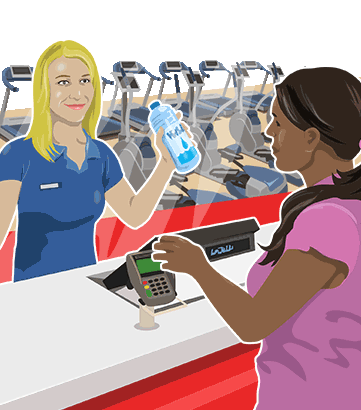

Trusted & Reviewed
4.7 / 5.0 |score based on 59,109 total reviews.
This Leisure Centre Health & Safety Course learning outcomes include; Sports and Leisure hazards and risks training for operational staff and others to address Conflict Resolution, Accidents and Manual Handling. Perfect for Duty Manager, Recreation Assistant, Receptionist and Life Guards etc.
Learn more.
Key-points of COBCOE Training






Pricing
Bulk Pricing Explained
Organisations, Groups and Businesses training 25 or more people with this course pay £20 per person.
Larger orders from Agencies & Enterprises, training 100 or more people with this course, only pay £8 per person.
These bulk discounts are automatically applied at checkout for your convenience.

This online course includes all of the 20 lessons above. It is designed to develop the trainees Leisure Centre Health & Safety skills for health and safety compliance in the workplace, providing valuable real-world learning outcomes at a high speed. It's used by individuals, groups and businesses to train their workforce across industries including Education & Schools, Government & Institution, Charities & NGO, Oil, Gas & Mining, Travel & Leisure, among others.
Provided by COBCOE Training based in UK, it's accessible at anytime online from an internet connected device at work or home, such as a computer, tablet or smart phone. Teams have access to a highly rated LMS and all successfully completing trainees achieve a Certificate of Completion.
—Our Health & Safety for Leisure Centres course is perfect for health, safety and risk management requirements of Sports & Leisure Centre operational staff and others, such as a; Duty Manager, Recreation Assistant, Receptionist/Administrator and Life Guards etc. who are responsible for not only their own safety and that of their colleagues, but also people other than those at work (e.g. volunteer staff like coaches, club members, visiting teams and spectators).
This course will benefit anyone who works within a Sports or Leisure Centre environment, enabling them to recognise fundamental risk factors such as chemicals or other substances that may cause harm within the sports and leisure environment, and other elements such as manual handling risk factors including an understanding of the anatomy of the spine and causes of back injuries, and practical advice on safe lifting techniques. This course focuses specifically on the common hazards to be found in the sports and leisure centre industry including Workstation Safety (DSE), Manual Handling and Fire Safety, but also the very real issues of Conflict Resolution, Lone Working, Working at Height, Accidents, Slips, Trips and Falls and Work-life Balance and Stress, to name but a few.
Health and safety laws should not be a barrier to organising and running amateur sports activities that are an important part of community life, but a framework under which to keep those engaging in activities healthy and well. Within the Sports and Leisure industry it's so important that workers are provided with a detailed awareness of the hazards that face them day-to-day, which can be difficult to do sometimes, as many people may not even recognise the on-the-job tasks and activity hazards they manage day-to-day such as swimming or organised sporting activities. This course provides the foundation to sensible and proportionate risk control measures, where the safety of members of the public, particularly the safety of children and young people are key factors.
Course Tags: leisure centre, council, work life balance, safety signs, risk assessment, lone, bullying, asbestos, incident, accidents, coshh, workplace, display screen equipment, dse, falls, trips, slips, stress, wellbeing, harassment, health and safety, fire, inspection, handling, manual, workstation, induction, conflict resolution, level 2, award,
Book a free consultation with an experienced specialist to find the right course or create bespoke custom training for your team, there's no commitment.